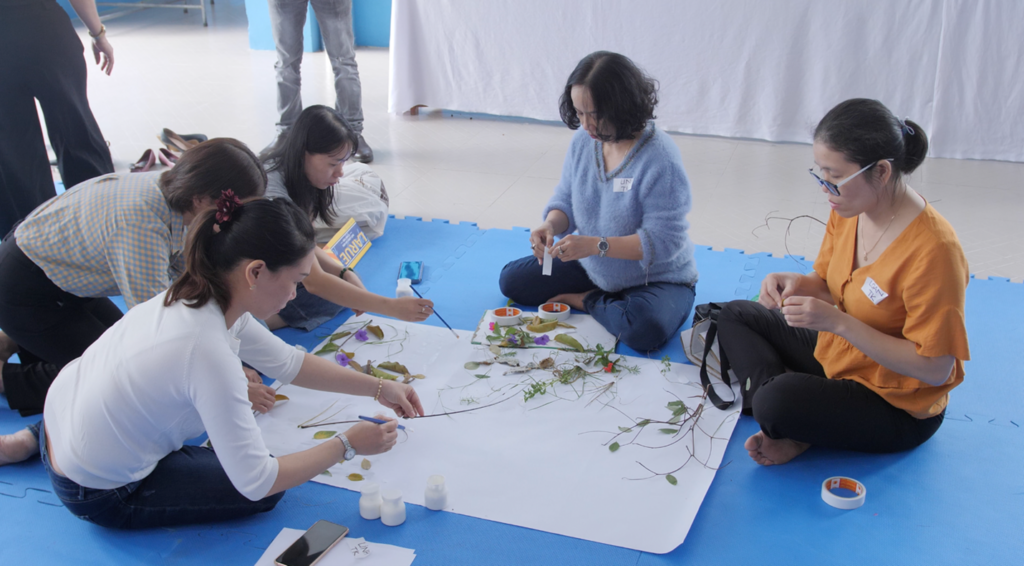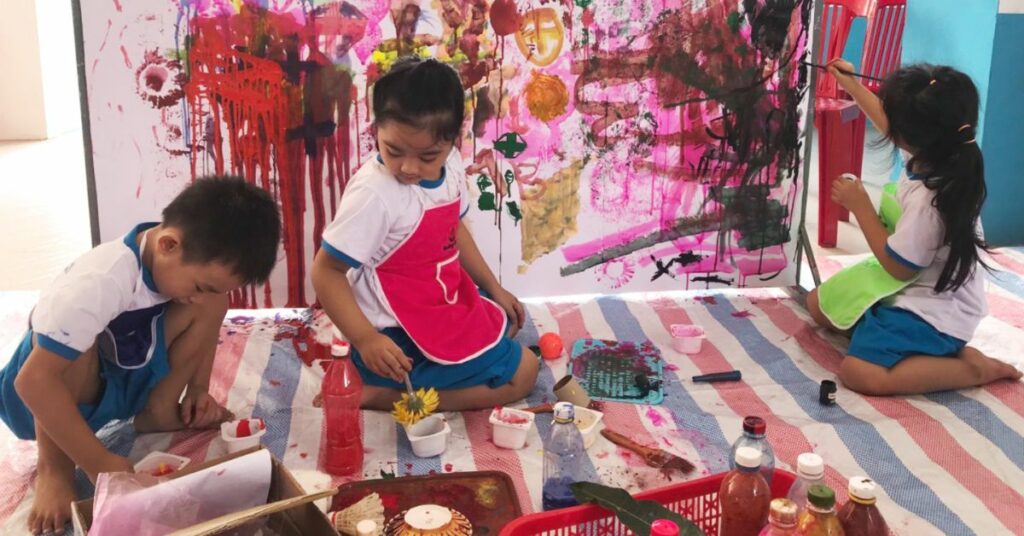6 min read
Vietnam’s recent economic growth has been among the highest in Southeast Asia, framed as an ‘economic miracle’ (Van & Sudhipongpracha, 2015). But is this truly a miracle if certain populations of children are left behind?
This sizable transformation in economic growth has led to rapid urbanization in big cities. While urbanization is seen as a driver of economic growth and poverty alleviation (UN Habitat, 2016), the process also creates specific social challenges, particularly for children. Certain adverse experiences resulting from urban growth have the potential to affect child development such as; poor social and emotional development; higher risk of mental health problems and hindered school readiness for preschoolers (Perry and Conners-Burrow, 2016, cited in Solis Schnyder et al, 2020).
Da Nang, the sixth largest city in Vietnam, is a prime example of rapid urbanization. The city services are consciously working to safeguard that the full potential of urban development benefits all citizens – including many newcomers from rural provinces. However, urban growth can soon put pressure on the educational system: it can exhaust the capacity of public schools while it can also bring in urban stress. Based in Da Nang, VVOB-Vietnam created a 3-phase programme that sets out to not only unearth the educational challenges that arise in rapidly growing cities but develop specific strategies that mitigate these barriers. Let’s see what barriers were identified, what potential solutions were discovered, and if these solutions could be brought to scale.
The city as a barrier.
During the first phase of VVOB’s CITIES programme, VVOB facilitated group discussions with teachers, school leaders, and government officials where they could reflect on their community and the classrooms in order to identify specific barriers that exist in rapidly urbanizing contexts. Through this, they identified that the most pressing barriers in their preschools are limited access to green spaces, limited interaction with surroundings, changes in social cohesion, lack of parental time, and increased screen time. Cities are often fast paced, which can create highly stressful environments for both students, parents and teachers. These types of conditions could negatively impact students’ development, particularly for those that are already living in vulnerable conditions.
The city as an opportunity.
Despite identifying several barriers, teachers also saw opportunity in the city. Cities provide a setting rich in arts and culture. Leveraging those resources in the city, teachers in CITIES phase 2 created an 8-activity tool kit for teachers. These activities are based in the ‘learning through play’ (LtP) methodology, with a specific focus on the arts.

Teachers were trained to facilitate these activities and how to adapt their lessons to include art-inspired pedagogy (AIP). While the foundation for the methodology is learning through play, this programme focused on using the arts and the city identity to engage students and increase their holistic development. Despite more research still needing to be conducted, according to the teachers and school leaders of CITIES, AIP was successful in increasing the engagement of their students and enriching their learning experiences. AIP allows students opportunities to engage more in their environment, providing alternatives to screen time and contributing to the alleviation of some of the tensions in social cohesion that the city can bring. Playful pedagogies, such as AIP, may reduce the stress levels of children as well, which is a common barrier in urban education.
“Children become daring and confident, and self-disciplined in activities. They are willing to share and help friends, work in groups to complete tasks together.”
-Teacher, Da Nang
To succeed, teachers needed autonomy and encouragement to try these new techniques. Professional learning communities (PLCs) were created among the teachers in Da Nang to provide a safe and supportive place for teachers to share ideas and reflect on their experiences implementing art-inspired pedagogy. The establishment of PLCs not only supported teachers in the initial implementation of art-inspired pedagogy but provides a structure for teachers to continue to develop innovative ways to mitigate the new and changing barriers that are surely to develop in the upcoming years. The world is quickly and constantly changing, and teachers need to have systems in place that allow them to reflect and create new solutions.
The city in the future.
In the third phase of the project, VVOB has been focused on measuring the impact of this pedagogy on the students and advocating for AIP and LtP as potential solutions to mitigate urban barriers in other cities in Vietnam.
“I’ve seen that the activities allowed the teachers to be more flexible in integrating this pedagogy in daily activities, removing urban barriers, creating more freedom for children, not pushing nor forcing children but letting the kids play and try freely.”
– Da Nang BOET
In other rapidly growing areas, particularly in the southern provinces, these strategies could have the same positive effects on the children that we saw in CITIES in Da Nang. VVOB will be exploring the possibility of scaling learning through play, and specifically art-inspired pedagogy in other urban settings such as these.
In order to evaluate whether our programmes have the potential to be scaled up to other areas in Vietnam, VVOB alongside other academic partners, have created the Education Sustainability Checklist (ESC). This checklist digs deep into the features of an innovation that would make it easier or harder to scale up in a given context. By using this checklist both before developing a programme and throughout implementation, organizations can determine whether an innovation is ready to be scaled up given the current conditions and context. It also allows the organization to reflect on potential challenges to scaling up ahead of time in order to more successfully adapt the innovation. The ESC is a unique and structured reflection tool with tangible outcomes that allows an organization to work with diverse stakeholders to think more strategically prior to scaling up an innovation.
In an educational context, one crucial part of scaling is to ensure the alignment of the innovation with the current and future policies of the Ministry of Education and Training (MOET). For our current innovation (AIP), it is promising to hear that it is in line with the renewed curriculum and child-centered approach that MOET is promoting. Many other cities in Vietnam are rapidly growing and looking for solutions to the new challenges in ECE. The conditions are right to scale this innovation in these growing cities.
“We have implemented activities in all our schools. The schools made plans and allocated funds for the activities so that the teachers had opportunities to apply activities that are in line with the MOET’s curriculum that focuses on the child-centered approach”.
-BOET, Da Nang
The world is changing quickly. Many children are currently in school systems that have not kept up with the rapid growth of the city and the new environments in which they find themselves in. School systems must provide teachers with structures and processes that allow for innovative and contextualized solutions to be developed to address the emerging challenges. Through collaborative processes, both at the teacher level and government and partners level, we can create school systems that are adaptable, innovative, and prepared for any future that lies ahead.


















